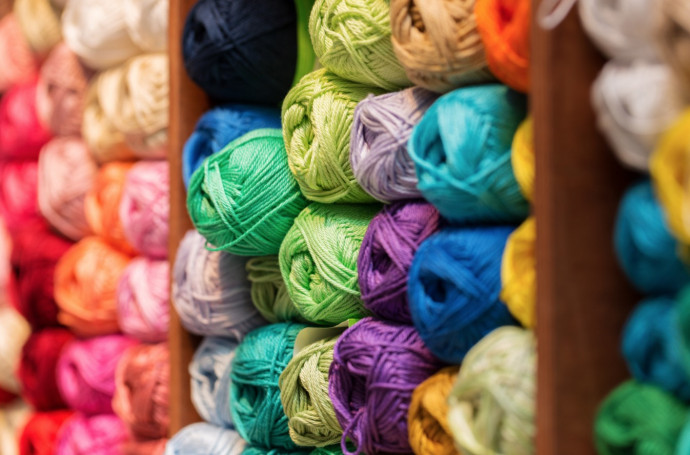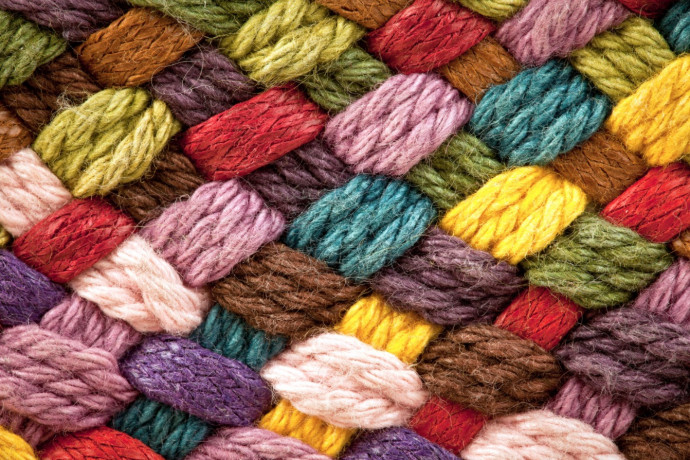Here I will try to answer some of the most common questions crocheters have and to anticipate some questions you might have in future. In my opinion, being a “good” crocheter is not about making perfectly stitched, elaborate, artful creations. It is rather a matter of confidence. You need to be sure of what you are doing and how to do it, and then have the confidence to figure out what to do if things aren’t going quite right. Understanding why you do certain things and why they turn out the way they do increases confidence and leads to successful crocheting. The more you learn, the better you become, in crochet as in life. So feel free to leave your questions below! Be sure to make them as detailed as possible, and I will try to help you as best as I can.
1. What is the best way to pull yarn from the ball?

A: Usually pulling from the center is best. If you are using a commercially packaged skein or ball, first look to see if the outside strand of the yarn is tucked into the center of the ball. If it is, pull it out but don’t use it. Stick your fingers into the center of the ball and fish around to see if you can find the inner end. You may need to pull out a little wad of yarn and unravel it in order to find the tail. This is the end to use as it will draw from the inside of the skein.
2. How do I handle a loose hank or skein of yarn?

A: Don’t try to work directly from the hank or you’ll be sorry! You need to wind it into a ball before you start stitching. You can use a yarn swift, lampshade, chair, or someone willing to hold the yarn for you. Untwist the hank and hang it carefully on your holder. If the yarn is tied in several places, cut the shorter pieces of yarn and throw them away. Sometimes there is a single knot where the beginning and end meet, wrapped in such a way as to keep the yarn from tangling. Be especially watchful in the beginning, because you may have to unwrap the yarn from around the skein for the first few revolutions. Cut the knot, and take a single end in your hand, winding carefully for the first round or two until you are certain that the yarn is unwinding without tangling.
3. Can I create my own center-pull ball?

A: Yes. The easiest way is with a ball winder, which winds the skein into a nice center-pull form. If you don’t have a ball winder, however, you can do it manually:
1. Hold the starting end between your thumb and forefinger and spread your other fingers. Keeping the tail secure with your thumb, wind the yarn in a figure eight around your fingers about a dozen times. Don’t let the strands overlap each other.
2. Pinching the yarn where it crosses itself, slide the yarn off your fingers.
3. Fold the bundle of yarn in half.
4. Keeping 10–12 inches of the tail end dangling, start winding the yarn loosely around this little wad of yarn, turning it this way and that to form a ball. Wrap the yarn over your fingers as well as over the ball of yarn to ensure that you are wrapping loosely enough. When you have finished winding, you should be able to pull on the tail coming out of the middle of the ball.
4. How do I know if my ball is wound too tightly?

A: Your ball should not be hard — it should have a bit of spring to it. Yarn wound too tightly is stretched and tense, which is apt to cause trouble once it’s made into a fabric. The yarn may become permanently stretched, decreasing its elasticity. Even if it isn’t permanently ruined, if you stitch the yarn up in its stretched state and then wash it, it will return to its natural, unstretched state, with possible undesirable consequences to the size of the piece! If you wind a center-pull ball, the ball collapses in on itself as it is used, releasing any extra tension.
5. What is a novelty yarn?

A: Just as its name implies, this isn’t your run-of-the-mill yarn. You’ll know it when you see it. The fun of a novelty yarn comes from its unique characteristics; it can be made from almost anything and spun in almost any way. It may have a great deal of texture, or it may be spun with non-fiber additives such as beads or feathers. It may have little bits of stuff hanging from a main core. It may be a thin “crochet along” (or “knit along”) thread meant to be held together with another strand of yarn as you stitch, or it may be as bulky as your thumb.
Novelty yarns are often described by their characteristics: eyelash, slub, metallic, ribbon, or bouclé (meaning curly in French). When substituting one novelty yarn for another, choose a similar yarn type in order to achieve a similar look.
6. I’ve tried working with novelty yarns but found them frustrating. Do you have any suggestions?

A: Novelty yarns and fuzzy yarns are beautiful, but they can present a challenge for crocheters. Here are some tips that may make it easier if you are using a novelty yarn:
Use your fingers as well as your eyes to determine where to put the hook.
Work between stitches rather than into actual stitches. (If you are following written instructions, be aware that the gauge and look of the fabric will be different from fabric stitched in the standard way.)
Work with a larger hook than you normally would use for the weight of your yarn. Again, pay attention to your gauge if you are following a printed pattern.
Try a mesh stitch rather than a solid stitch pattern. It’s easier to work into chain spaces than into stitches.
Work two strands together, such as a smooth yarn along with the novelty yarn, to help distinguish the stitches.
Crochet with a smooth yarn while holding the novelty yarn on the right side of the fabric. Work the stitches over the novelty yarn as you would when covering yarn tails, catching the novelty yarn in every stitch, or in every 2 or 3 stitches.








CD TV